The lotus flower tattoo is more than just a visually striking choice for body art; it holds deep meanings that resonate across different cultures and personal beliefs. A lotus flower tattoo often symbolizes purity, spiritual growth, rebirth, and resilience in the face of adversity. This powerful flower emerges from murky waters to bloom with remarkable beauty, making it a meaningful option for expressing transformation and inner strength.
Choosing a lotus flower design allows you to personalize your tattoo, not just through style or placement, but also through color, each of which carries its own unique symbolism. Whether you seek a simple black outline or a more vibrant, colorful depiction, your lotus tattoo can reflect individual stories and values that are important to you.
Key Takeaways
- Lotus flower tattoos represent personal growth and spiritual meaning.
- Colors and designs can change the symbolism of your tattoo.
- Placement and style make each lotus tattoo unique to the wearer.
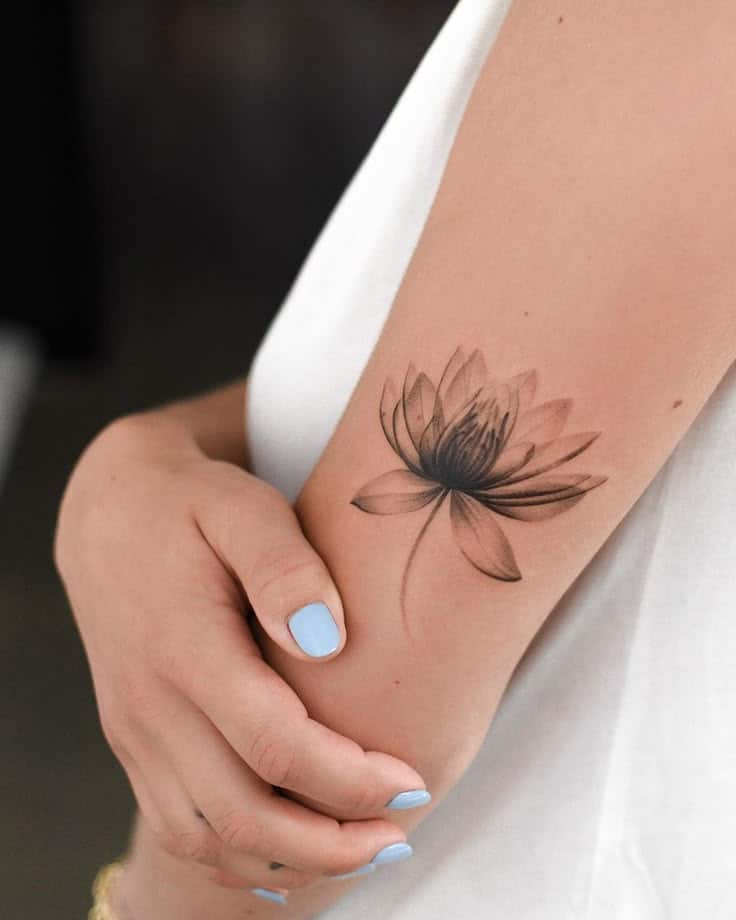
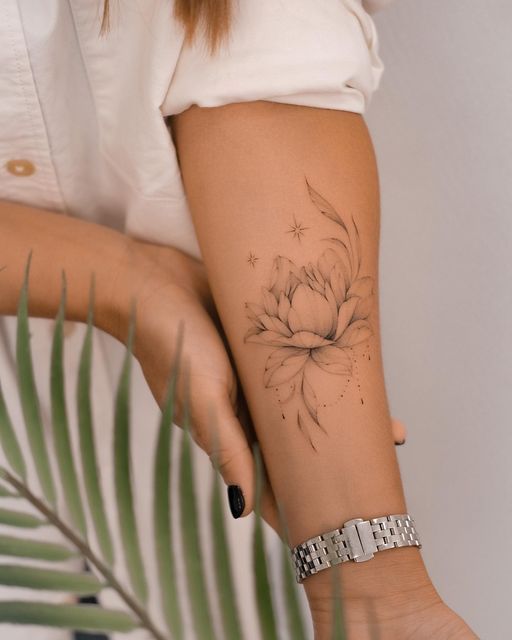
Symbolism and Meaning of the Lotus Flower Tattoo
A lotus flower tattoo carries layered meanings tied to spirituality, personal growth, and aesthetics. Its significance varies based on cultural context, color, and personal intent, often representing inner transformation and harmonious living.
Purity and Enlightenment
The lotus flower is a powerful symbol of purity and spiritual enlightenment. In many traditions, the flower grows in muddy water and rises above the surface clean and beautiful. This journey is often seen as a metaphor for achieving clarity and purity of mind despite life’s obstacles.
When you choose a lotus flower tattoo, you signal a desire for spiritual awakening or ongoing personal growth. The tattoo can represent your pursuit of spiritual awareness and a clean slate in life’s journey.
For some, the lotus symbolizes a connection to a higher power or deeper understanding. It often signifies the overcoming of ignorance, bringing about enlightenment and inner peace.
Rebirth, Growth, and Transformation
A recurring theme of the lotus flower tattoo is rebirth and transformation. Lotuses close at night and reopen with daylight, which is commonly viewed as a symbol of renewal and new beginnings. This daily transformation mirrors your ability to recover, heal, and start fresh after difficult times.
The tattoo can represent your personal growth, reflecting how you’ve changed and what you’ve learned along the way. It ties closely to spiritual growth, highlighting your journey through life’s phases.
People often get a lotus flower tattoo after a significant life event, using it as a mark of their transformation and the pursuit of a new chapter. The tattoo reminds you that every day is a chance for renewal.
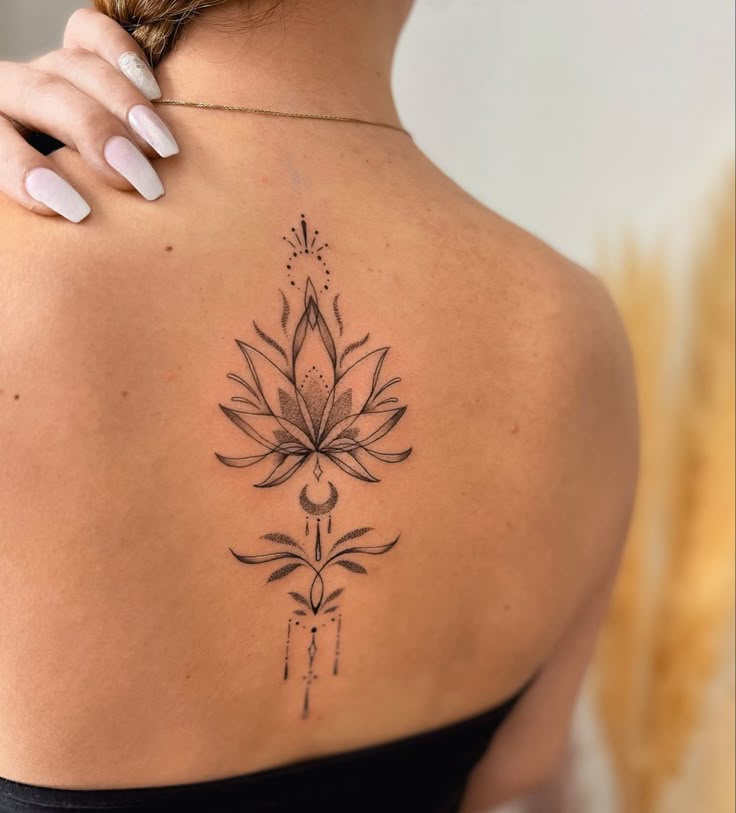
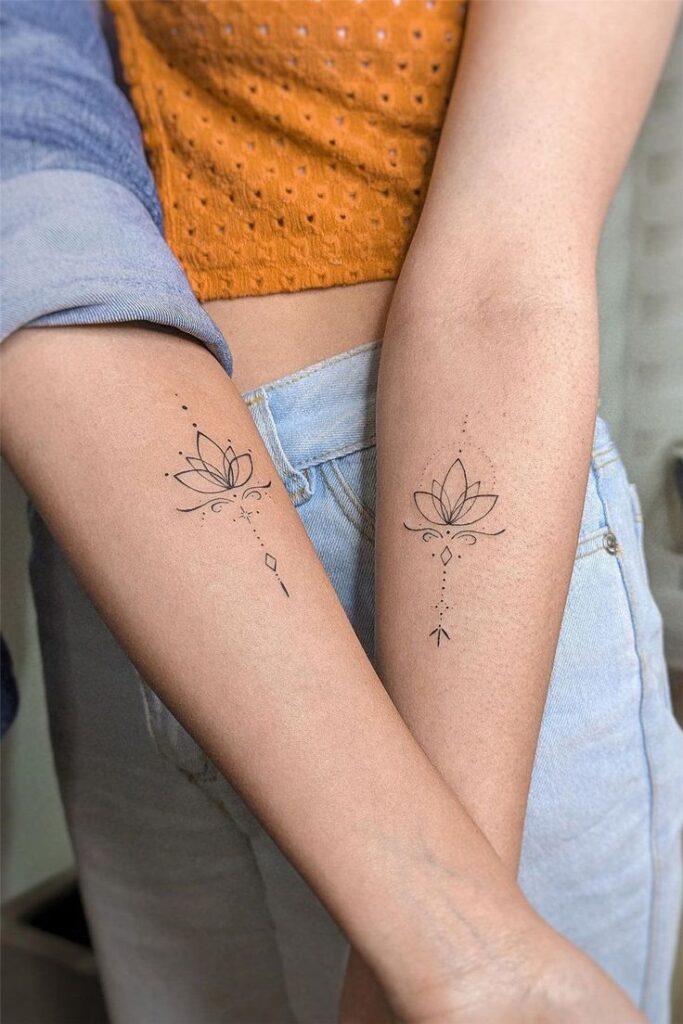
Strength, Resilience, and Overcoming Challenges
The growth of the lotus flower in muddy, challenging conditions makes it a symbol of strength and resilience. Choosing this tattoo can express your determination to overcome adversity and maintain inner strength when facing life’s difficulties.
For many, the lotus flower tattoo is a reminder of their ability to persevere. It marks the story of rising from hardship while keeping your values intact.
The design is especially meaningful if you have endured tough circumstances and want to commemorate your resilience. It stands as a testament to your ability to emerge stronger and more capable despite obstacles.
Beauty, Elegance, and Balance
A lotus flower tattoo also embodies beauty, elegance, and balance. The flower’s symmetrical shape and intricate petals are often admired for their aesthetic appeal. It represents harmony between body, mind, and spirit.
The design can also express your appreciation for the natural world’s artistry. Many choose the lotus tattoo for its visual beauty as well as its symbolic meaning.
Lotus tattoos can be customized with distinct styles, colors, and placements to highlight different aspects of elegance and balance. This appeals to those wishing to combine meaningful symbolism with a graceful, refined appearance.
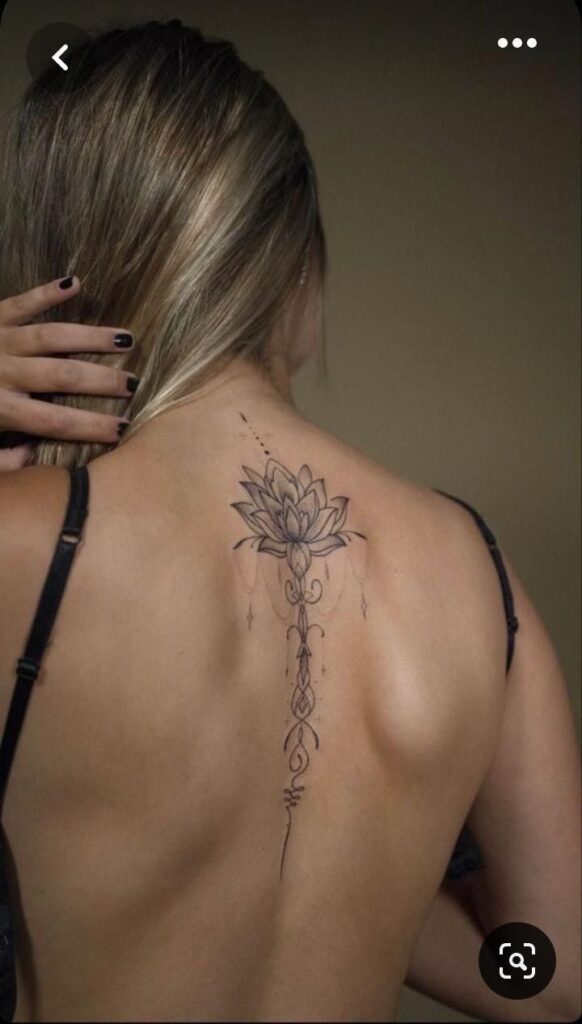
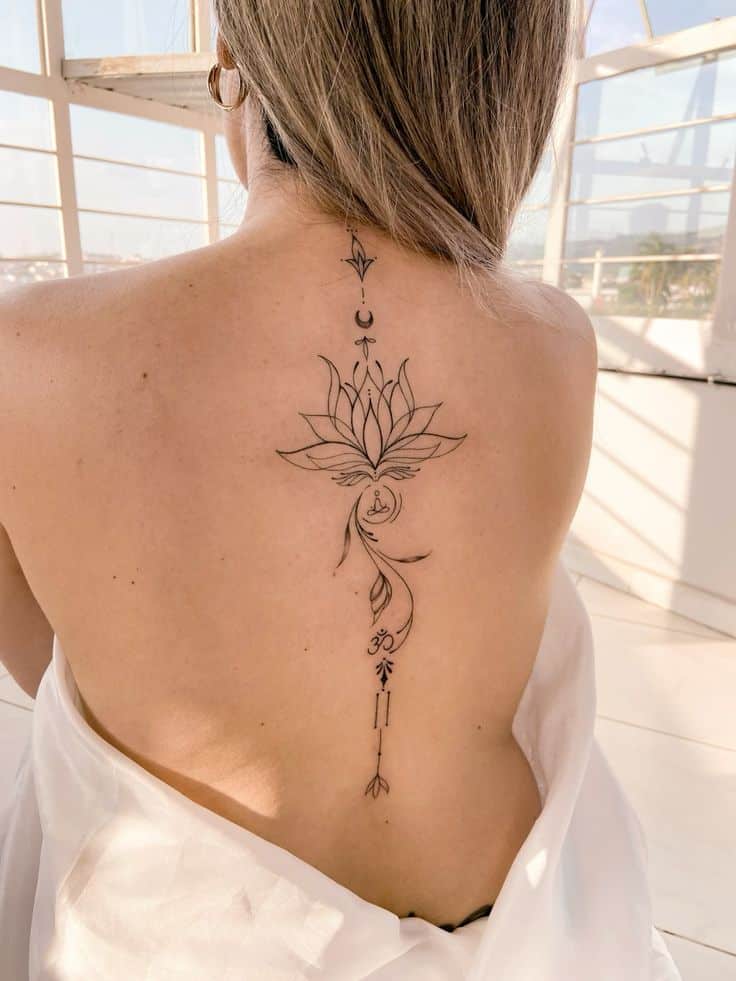
Cultural and Religious Significance
The lotus flower carries deep meaning in Buddhism, Hinduism, and Ancient Egyptian beliefs. It is a powerful symbol in spirituality, representing purity, creation, and spiritual awakening across these cultures.
Lotus in Buddhism
In Buddhist traditions, the lotus flower holds a central role as a symbol of spiritual awakening and purity. You may notice it is often associated with the idea of rising above suffering, much like the lotus emerges clean from muddy waters. The flower is frequently depicted alongside Buddha or bodhisattvas, highlighting its link to enlightenment.
Many Buddhist schools recognize the lotus as one of the Eight Auspicious Symbols. Each color of lotus has its own specific meaning: for example, the white lotus symbolizes spiritual purity and the pink lotus is linked to the Buddha himself. The unfolding petals reflect the gradual opening of the heart and mind on the spiritual path.
The lotus also stands for compassion and wisdom—two core values in Buddhism. Choosing a lotus tattoo in this context reflects a commitment to empathy, inner growth, and overcoming obstacles along the way to self-realization.
Lotus in Hinduism
In Hinduism, the lotus represents both spiritual and material creation. Deities like Vishnu, Lakshmi, and Saraswati are often depicted sitting or standing on lotus flowers, symbolizing their divine purity and detachment from the physical world.
The lotus is closely tied to the concept of chakras, especially the crown chakra (Sahasrara), which is described as a thousand-petaled lotus at the top of your head. Awakening this chakra is said to lead to spiritual enlightenment and connection with the universe. The Om symbol is sometimes paired with the lotus to reinforce spiritual unity and transcendence.
In Hindu mythology, the lotus serves as a symbol of fertility and regeneration. Its ability to bloom in challenging conditions mirrors the soul’s potential to rise above worldly troubles and reach higher consciousness.
Lotus in Ancient Egypt
In Ancient Egyptian culture, the lotus flower symbolized the sun, creation, and rebirth. You can find lotus motifs in tombs, temples, and jewelry, underlining its importance in both daily life and the afterlife.
The Egyptians noted how the lotus would close at night and open at dawn, associating it with cycles of life, death, and resurrection. This connection made the lotus a key emblem in beliefs about immortality and the journey of the soul after death.
For Ancient Egyptians, the lotus was also tied to fertility, as it thrived along the banks of the Nile. Its image was linked with creation myths and goddesses, such as Isis, who was known for her role in protection and rebirth. The lotus stood as a reminder that renewal and new beginnings are always possible.
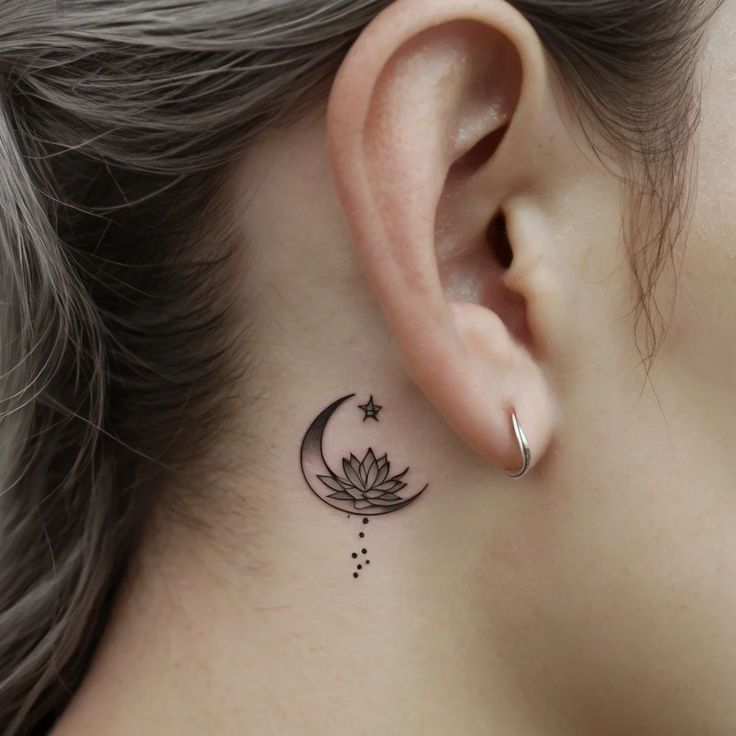
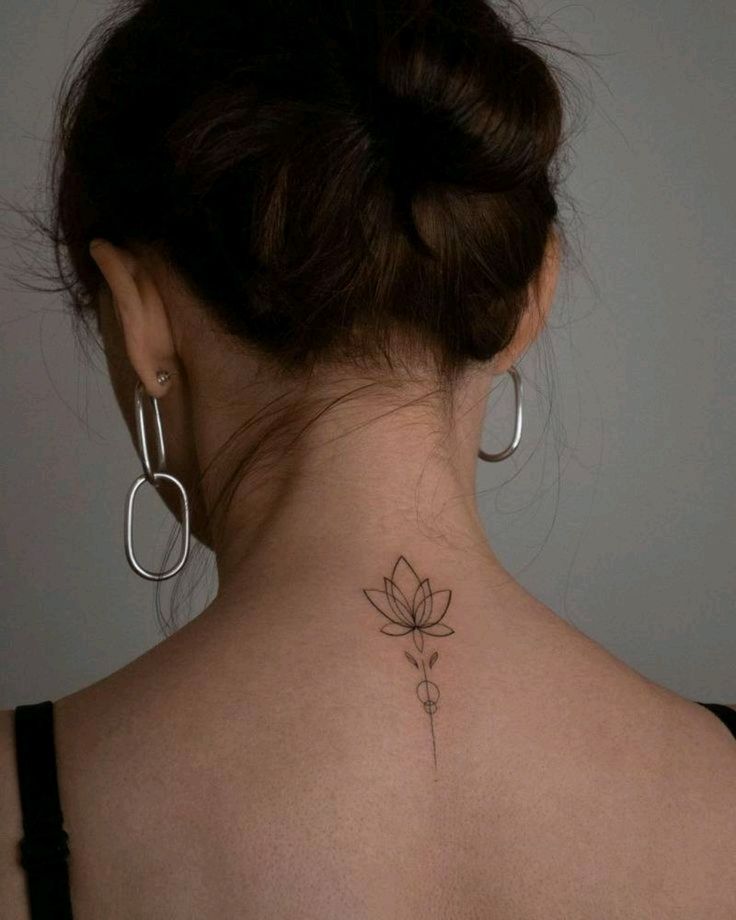
Lotus Flower Tattoo Colors and Their Meanings
The meaning of a lotus flower tattoo can change significantly based on its color. Each hue carries specific associations, often linked to spiritual beliefs, cultural traditions, and personal symbolism.
White Lotus and Spiritual Purity
White lotus tattoos are commonly chosen to express ideals of purity, innocence, and spiritual awakening. The white lotus has deep roots in Buddhist and Hindu symbolism, where it represents a state of spiritual perfection and the ability to rise above worldly temptations.
In tattoo art, a white lotus may be used to reflect your aspiration for inner peace, clarity of mind, or a life free from negative influences. It’s often associated with enlightenment and the journey toward self-improvement.
Some people also see the white lotus as a reminder to maintain integrity and honesty, even when faced with challenges. For many, this colored lotus serves as a daily symbol of clean intentions, making it a popular choice for those valuing personal ethics.
Red, Pink, and Yellow Lotus Symbols
Red lotus tattoos usually denote intense emotions such as love, passion, and compassion. The red lotus frequently appears in Eastern traditions as a symbol of the heart and deep connection to others.
Pink lotus flowers are commonly linked to devotion, spiritual enlightenment, and reverence for higher powers. Many consider the pink lotus the supreme lotus in Buddhist contexts, connected to historical figures such as the Buddha.
Yellow lotus tattoos represent joy, creativity, and new opportunities. In some cases, yellow symbolizes openness and curiosity, making it an excellent choice if you want to signal optimism about the future. When grouped together, these colored lotus designs offer a diverse expression of relationships, emotional growth, and spiritual devotion.
Blue and Purple Lotus Spirituality
Blue lotus tattoos are strongly linked to wisdom, intelligence, and the pursuit of knowledge. In spiritual contexts, the blue lotus often symbolizes the triumph of the mind over the senses and everyday distractions.
If you choose a blue lotus, you might use it to represent mental clarity, self-mastery, or dedication to lifelong learning. It’s also recognized for its calming and meditative qualities.
Purple lotus tattoos are relatively rare but highly meaningful. They are associated with mystical insight and spiritual awakening. A purple lotus may indicate your desire for deeper self-understanding or personal transformation. Both blue and purple colored lotus tattoos are commonly selected by those on a spiritual journey or seeking higher consciousness.
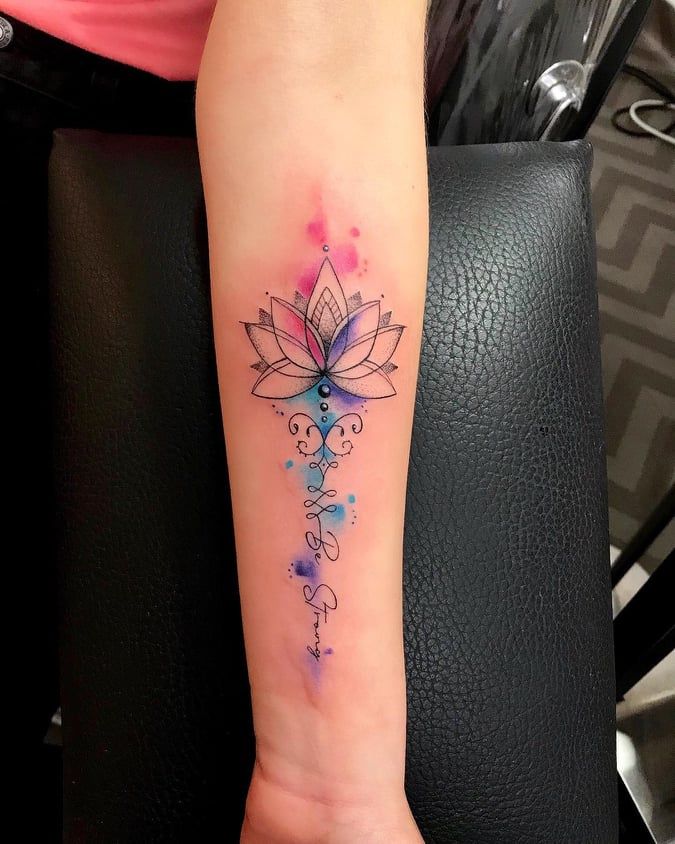
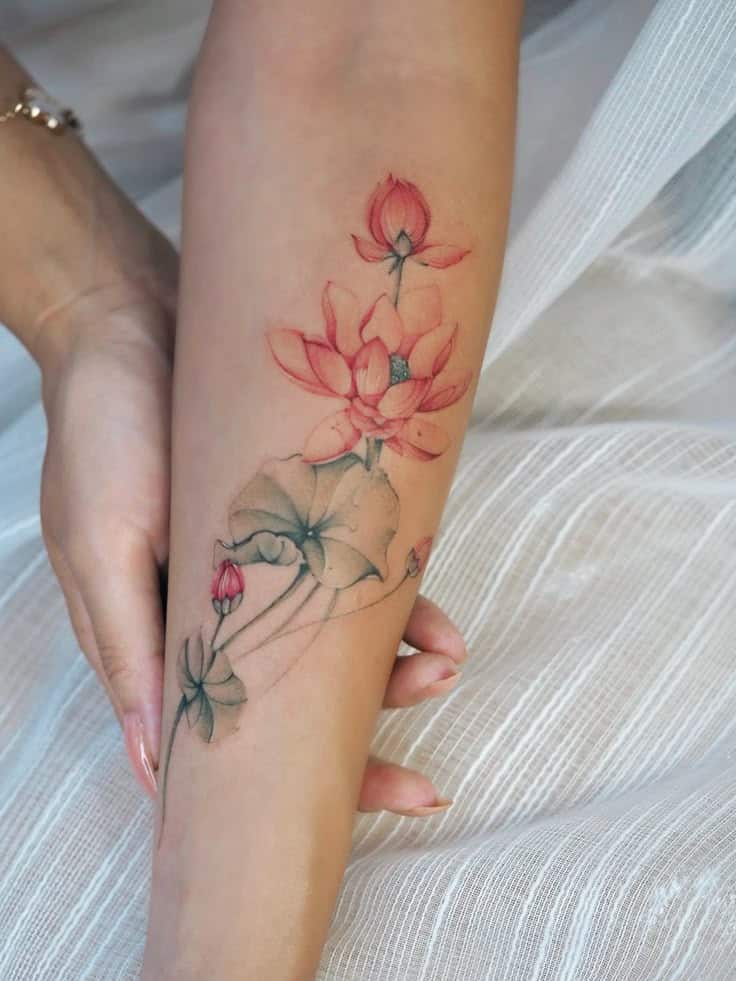
Popular Lotus Flower Tattoo Designs and Motifs
Lotus flower tattoos offer you a broad range of artistic styles and creative motifs. Whether you prefer precise lines, symbolic integration, or vibrant color, each design can hold unique significance.
Mandala and Geometric Lotus
Mandala lotus tattoos blend the symmetry and intricate patterns of mandalas with the elegance of the lotus flower. These designs use detailed linework and repeating shapes to create a balanced and harmonious look.
Geometric lotus tattoos often feature sharp lines and geometric elements, emphasizing order and structure. This style focuses on clarity, unity, and the beauty of symmetry. For many, a geometric lotus means finding balance in life.
Common placements include the forearm, back, or sternum, where the sprawling pattern can be fully appreciated. These tattoos usually appear in black ink, but some add subtle shading for depth.
Watercolor, Japanese, and Unique Styles
Watercolor lotus tattoos are known for their vibrant color washes and lack of harsh outlines. The style mimics brushstrokes and paint splatters, giving your tattoo a soft, artistic feel. Watercolor can make the lotus appear delicate and expressive.
Japanese lotus tattoos often use bold lines, flowing shapes, and a combination of other traditional elements. In Japanese tattoo art, the lotus often represents perseverance and spiritual awakening, reflecting its cultural significance.
Unique lotus flower tattoos may combine mixed media, abstract forms, or creative twists on traditional motifs. You can customize your piece through non-traditional placement, unexpected colors, or the inclusion of animals or other symbols.
Unalome and Om Symbol Integration
Unalome and Om symbol integration provides deep spiritual meaning to your lotus tattoo. The unalome, a winding line ending in a spiral, symbolizes the journey toward enlightenment. When combined with a lotus, this creates a motif about rising above life’s challenges.
The Om symbol, a sacred sound in Hinduism and Buddhism, is often placed at the center of the lotus or incorporated in the petals. When these symbols are paired, your tattoo can represent spiritual growth, mindfulness, and the union of mind and body.
Most of these tattoos use fine lines and minimalist detail, allowing the symbolism to stand out. Preferred placements include the wrist, forearm, or upper back for clear visibility and meaning.
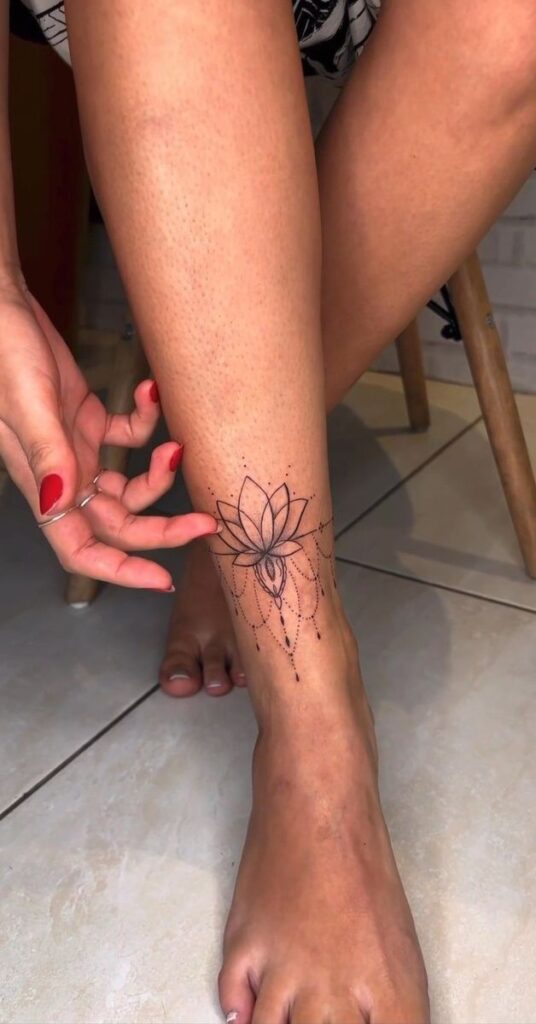

Tattoo Placement and Personalization
Where you place your lotus flower tattoo can change its meaning and impact. The design, size, and any added elements also help personalize your body art for your journey, beliefs, or milestones.
Popular Areas for Lotus Flower Tattoos
Some of the most common placements for a lotus flower tattoo include the wrist, forearm, shoulder, ankle, back, neck, thigh, and foot. Each location carries its own visibility and symbolism.
A wrist tattoo is easily seen and can serve as a daily reminder of resilience or mindfulness. The forearm allows for larger or more intricate designs, while a back tattoo can be expanded into a larger piece symbolizing strength and transformation. Ankle and foot tattoos tend to be more discreet, reflecting a private sense of growth or self-improvement.
For those looking to highlight personal growth or open-heartedness, a sternum or chest tattoo places the lotus near the heart. Neck tattoos may hold spiritual meaning because of their proximity to energy centers, while finger tattoos keep the design small and visible.
Example Placement Table
| Body Area | Visibility | Common Symbolism |
|---|---|---|
| Wrist | High | Daily reminder, growth |
| Forearm | High | Transformation |
| Ankle/Foot | Medium | Journey, resilience |
| Back | Low/Medium | Strength, endurance |
| Neck | Medium | Spiritual focus |
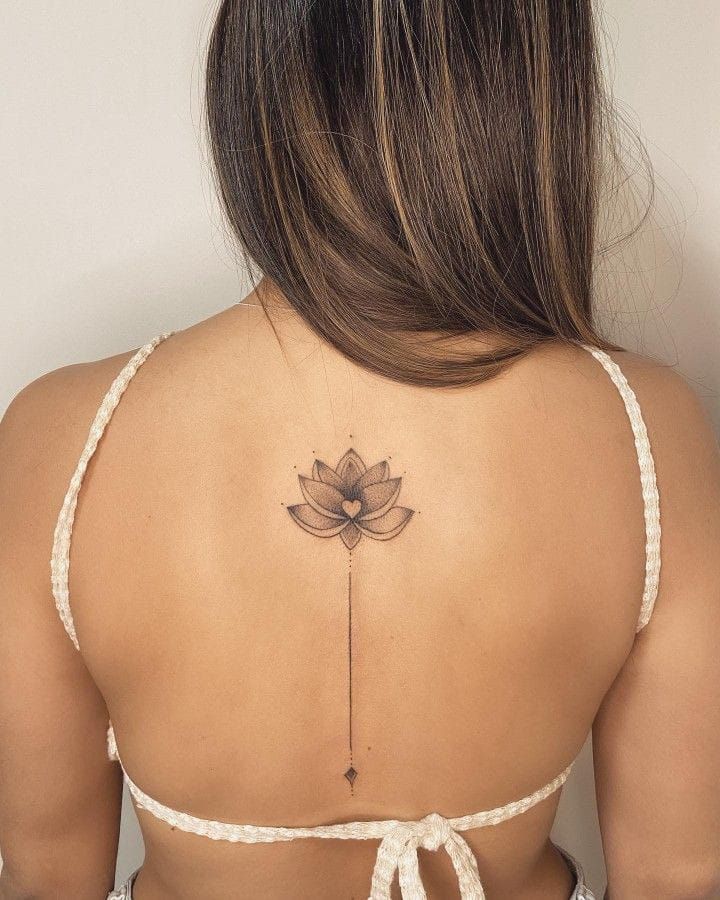
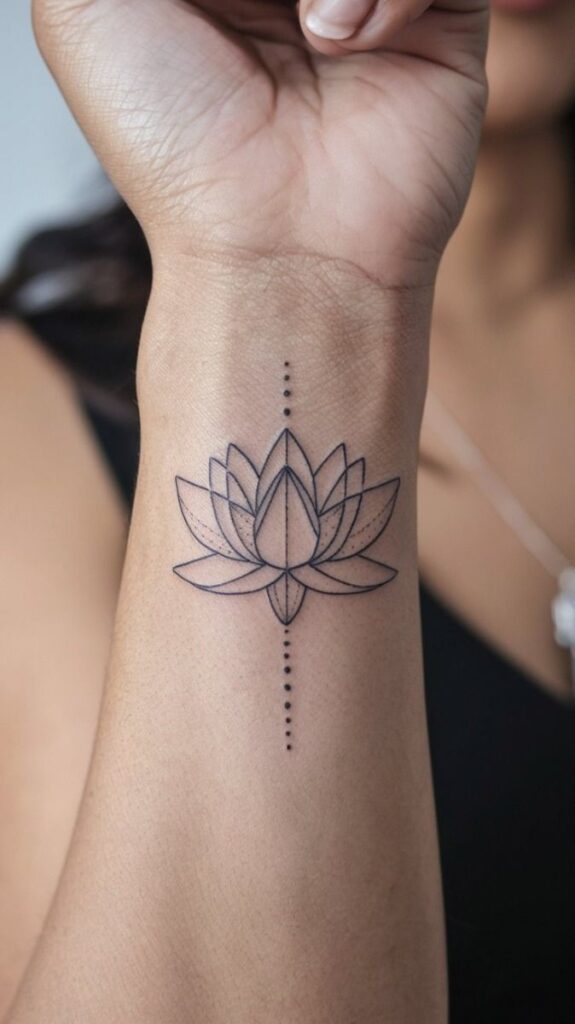
Small and Minimalist Lotus Tattoos
If you prefer subtle body art, small lotus flower tattoos offer a minimalist option that still carries powerful meaning. These can fit on the finger, wrist, ankle, or behind the ear. Small designs often focus on the classic outline or a single flower, keeping the symbolism direct and uncluttered.
Minimalist lotus tattoos are ideal for first-timers or those who want discreet symbols of personal growth, mental health awareness, or new beginnings. Even a small tattoo can serve as a constant visual cue for resilience and open-heartedness.
Some opt for single-line or fine-line lotus tattoos, which are less bold but more delicate. Their simplicity lets you carry the essence of the lotus without attracting too much attention.
Meaningful Personal Additions
Personalizing your lotus flower tattoo allows it to reflect your own experiences or aspirations. Common elements added to lotus tattoos include water, mandalas, koi fish, or words and dates that hold personal significance. You can also choose colors that resonate with your beliefs—such as blue for wisdom, red for love, or white for purity.
Incorporating symbols of mental health, recovery, or spiritual journeys can make your tattoo a unique part of your story. Names, initials, or quotes are often included as reminders of support or inspiration.
By combining lotus flowers with meaningful motifs, you ensure your tattoo goes beyond art and becomes a personal emblem. Each addition can highlight aspects of personal growth, transformation, or relationships, making your tattoo entirely your own.
- 0shares
- Facebook0
- Pinterest0
- Twitter0



